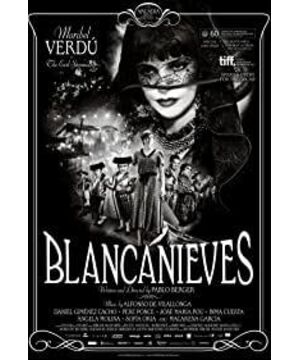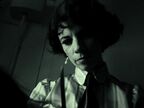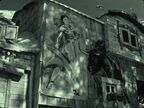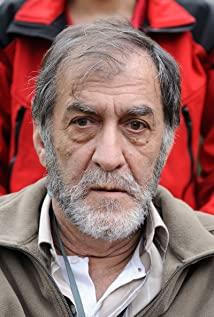Personally, when I was watching this movie, the first 1/3 made me feel excited. A movie with no sound and only sound effects can tell a story based on an old-fashioned fairy tale with pure film language. It’s true. It makes people sigh the beauty of art. I even think that without the sound, the audience will focus most of their attention on the screen. It is precisely a victory of the lens language and the beauty of the essence of the film has been highlighted. Why do I say that the first 1/3 of the film makes me feel excited, because this part is only the beginning of the film, although the length of time and space is large, but the time available for recording in the film is short, so the rhythm is very good, and the picture creates a powerful drama tension. In the bullfighting scene at the beginning, ten thousand people poured into the bullring in the big vision, and a grand spirit fell on the drawing board. The continuous montage before the matador appeared was an emotional expression. After the official appearance, a middle shot showed the relationship between the characters. A series of long-term and close-up reaction shots before entering the stadium, lifted the audience's hearts to their throats, and the drum beats of the soundtrack added momentum to the tense scene. The warm scenes before the duel scenes are moving and hint at the imminent danger. When the bullfighter was overturned by the bull, the multi-angle turbulent shots were quickly cut and cut, and the silent cries in the close-up shots could also be heard by the audience with grief. Through the transition of the eye lens, the next superimposed shot is like the handover of two characters, and the follow-up story is exactly like this. The nurse replaced the dead mother and became Snow White’s stepmother, and the nurse’s shot was small. Looking up from the angle, the dark power has already attacked. When describing Snow White growing up under the care of her grandmother, the bright rhythm showed the warmth of being cared for, and the absence of her father always made her feel that something was missing, as empty as the dusty alley after the car drove away. To make Snow White happy, grandma led her to dance, and the subjective lens spinning so dizzyingly proved that happiness is only a short-lived illusion. Grandma fell to the ground. The beautiful white dress was dyed black as a mourning dress. Snow White is here. In the shadow of the stepmother on the dark-clouded road, the push-track camera mounted in front of the car has a sense of powerlessness that knows the danger but can’t stand it. The next push-back camera inside the car makes the protagonist and the audience feel the same as before. The world is getting farther and farther away. Of course, this part of the shot may be deliberate, and a lot of information is revealed on the screen, but this is understandable. Because it is necessary to explain the background of the story and the relationship between the characters in a short time, it is a normal or correct strategy to show a little brushwork.
The latter 2/3 is not to say that the language of the lens is no longer strong, the cross-montage, superimposition and other techniques are used in a natural way, and the smooth transitions of childhood and adolescence are also impressive. However, the play is really unsatisfactory, and the characters who were originally angry have shrunk into thin paper figures, and many plots are not logical. There are several subjective shots in the attic in the film. Personal guess is that Snow White's father saw her current wife abusing his daughter. However, he did not do anything. It was not until the daughter came to him to remember that a daughter was still alive. And he knows that his wife is not good and he allows him to take charge of the family. Such characters are really puppets. The stepmother's lover drowned Snow White and left after being thrown into the pool. The murder was not so hasty, right? In the climax part, the final confrontation between Snow White and the bull actually stopped in the handkerchief wave raised by everyone. I don't understand the rules of bullfighting, but will it not be aggrieved to deal with the climax part of the movie in this way? It's like a fart that has been suffocated for a long time and suddenly misses it. Will it be uncomfortable? Even if the creators think that the complete success is a bit too cliche, but this kind of unsuccessful audience applauds so enthusiastically, is it even more excessive? Snow White, who has retrieved her memories, has not recognized the stepmother who abused her for several years and willingly eats the apples given by her stepmother. I really understand incompetence. Who can give me an explanation?
Script script, the book of a script. Although the role of the script cannot be overly magnified, because the script is the language of the text, the film is the language of the lens, and the uniqueness of the movie is carried by the language of the lens, but without a good story, it is difficult to make a good movie, at least in informalism. This is the case in the movie.
View more about Blancanieves reviews











